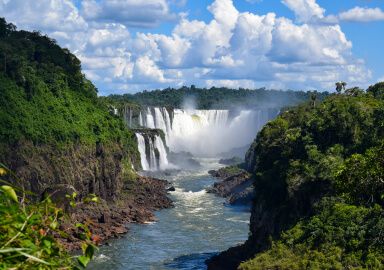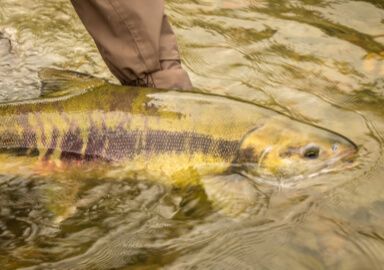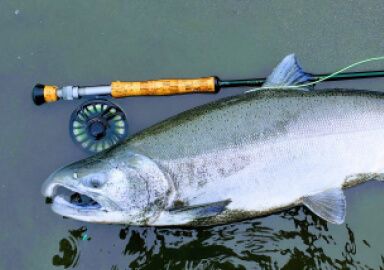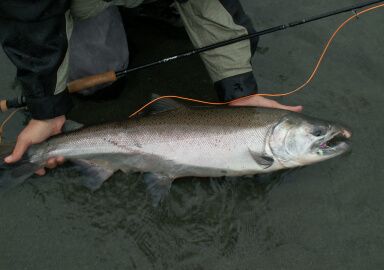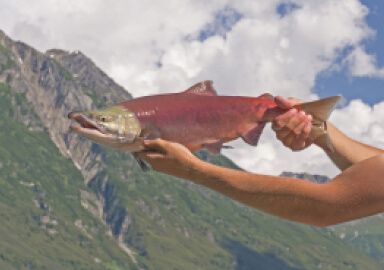Landlocked Salmon
Spending all its life cycle in freshwater, landlocked salmon is not as big as sea-going salmon, but is nevertheless a popular and exciting sport angling species.
View 8 listings
8
listings
–
price starting from
3
countries
–
to the nearest trip
Where and When?
The natural range of landlocked salmon was originally limited to Lake Sebago and some other freshwater bodies in Maine and elsewhere in the north-east of North America. Subsequently, however, they have been introduced to many other waters in the USA and northern Europe. They are now common in several areas of the Great Lakes and routinely stocked in many rivers and lakes from local hatcheries. These fish remain in freshwater all their lives, beginning in rivers where some stay until they die. They tend to prefer cooler waters and, in summer in lakes, often descend to greater depths to avoid the warmer surface layers. In winter they head upstream to spawn and are more active inshore. They feed, and can be caught, throughout the year depending on local fishing restrictions. Most fishing is carried out in daylight.
About Landlocked Salmon
Landlocked salmon are generally regarded as populations of the Atlantic salmon (Salmo salar) that remain in freshwater all their lives. Some people have proposed a separate name, the Sebago salmon, or even a new scientific name - Salmo Sebago - but the reality seems to be that it is a “normal” Atlantic salmon that, for reasons best known to itself, stays away from the ocean. Most populations are located in the eastern USA with some pockets of them reported from Norway and Scotland. The name originated in Lake Sebago, the deepest and second largest lake in the USA, and, from there, fish have been successfully introduced to the Great Lakes and elsewhere.
Landlocked salmon have a similar appearance to regular Atlantic salmon, with elongated silvery bodies; the males also develop the typical “kype” salmonid jaws during spawning. Much smaller than their sea-going colleagues, landlocked salmon average 41-46 cm (16-18 in.) and usually weigh about 0.45-0.68 kg. (1-1.5 lbs) - depending on feeding and other conditions they can grow to about 2.3 kg. (5 lbs.). They spawn in rivers, from October to December, and young stay there for a couple of years before moving to lakes. The young feed on invertebrates and fish but, as adults, they prey on fish and reduced prey densities will result in stunted adult fish.
How to Catch?
Despite their generally smallish size, Sebago salmon have a great reputation for giving an excellent, robust and often acrobatic fight. They usually repeatedly leap high out of the water and can perform somersaults in the process. Like most trout and salmon, they can be caught by a number of methods depending, on the area and preferences of the angler. Fly fishing with light tackle in rivers and around the margins of lakes can be successful and fun. In summer, however, most fishing is carried out by trolling using a weighted line to get down to where the fish are avoiding the warmer surface waters.
Landlocked salmon is very popular with many sport anglers and it may be caught throughout the year, even in mid-winter. Ice fishing enthusiasts often target them and they can be caught on live or dead bait as well as smallish jigs. These fish may not achieve massive size and cause adrenaline rushes, but their amazing jumps and sustained strong fight makes them a popular target and has created a large group of specialists who focus on them.


